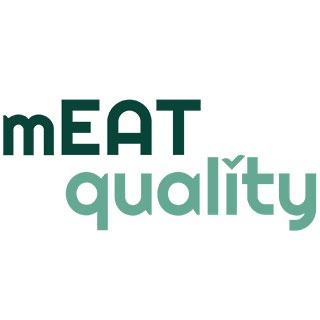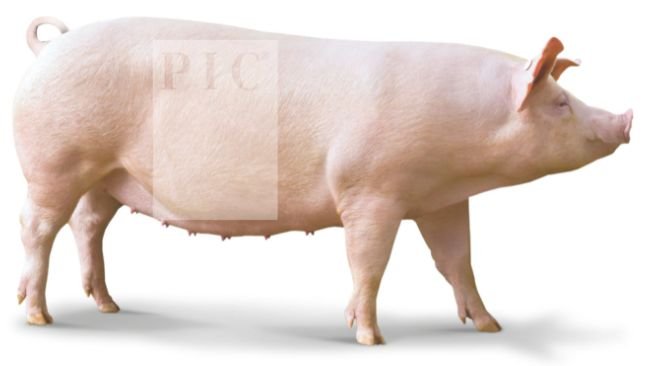
PIC dam lines. Health
Previous articles addressed genetic criteria and proper management guidelines. In this article, Tim Snider, Regional Director for Veterinary Services at PIC Europe, explains the basics of PIC's health program.
The pig sector events all around the world
Weekly newsletter with all the pig333.com updates
Swine industry news in your email
Pig health: news and articles on PRRS, PCV2, biosecurity, etc, Pig disease guide, atlas of pathology, clinical cases…
Biocheck.UGent is an independent, risk-based, scientific scoring system for assessing the quality of your on-farm biosecurity.
A visual and practical step-by-step guide on how to perform a necropsy on a pig.
All the information about ASF: how to recognize the disease, how it is transmitted, pictures of lesions, latest news, guides, etc.
All the information on Foot and Mouth Disease in pigs: how to recognize the disease, how it is transmitted, images of lesions, latest news, guides,...
Description of the most important diseases and conditions in pigs
Images of major swine diseases
Pig disease diagnostic tool
Definition for the most commonly used pig terms
Simulator that calculates the amount of drug to add to the water when using a flow dispenser.
Weekly newsletter with all the pig333.com updates
Pig Prices by countries. Pork production and trade. News of the pig market and the raw materials
The latest slaughter pig prices in the most important pig markets. Check the evolution of the historical prices in charts and in several currencies.
Latest quotations for the main commodities used in pig feed. Historical graphs with the pig price and estimated feed price.
Figures & trends in pig numbers, pork production and pork trade.
Global production and trade data for the most important raw materials
Weekly newsletter with all the pig333.com updates
Articles on nutrition and pig feeding, characteristics of raw materials and additives for pig feed. Prices of raw materials
Latest quotations for the main commodities used in pig feed. Historical graphs with the pig price and estimated feed price.
Technical sheets of the main raw materials and additives used in swine feed. They include a comparison of nutritional values from various sources, product
Global production and trade data for the most important raw materials
Definition for the most commonly used pig terms
Use this tool to diagnose problems with the feed conversion ratio. Click on the flowchart or on the buttons within the text to navigate through the different parts of the tool.
A biweekly newsletter with the latest developments in swine nutrition
Articles on genetics and pig reproduction: genetic improvement, genomics, artificial insemination, use of hormones
Compare production data, calculate the number of sow, nursery, and finishing spaces, and visualize your tasks on the work schedule by type of BMS.
Tool that allows you to calculate the replacement rate in your farm
Definition for the most commonly used pig terms
Use this tool to find out why your farrowing rate is less than ideal. Click on the flowchart or on the buttons found within the text to navigate through the different parts of the tool.
Weekly newsletter with all the pig333.com updates
Management, pig farm management, work planning in each production stage: management in gestation, grow finish, batch farrowing
Compare production data, calculate the number of sow, nursery, and finishing spaces, and visualize your tasks on the work schedule by type of BMS.
Tool that allows you to calculate the replacement rate in your farm
Definition for the most commonly used pig terms
Weekly newsletter with all the pig333.com updates
Design of facilities and equipment for pig farms: building design, climate control, feeding systems, etc.
Biocheck.UGent is an independent, risk-based, scientific scoring system for assessing the quality of your on-farm biosecurity.
Environmental Footprint Calculator along the pork value chain.
Definition for the most commonly used pig terms
Simulator that calculates the amount of drug to add to the water when using a flow dispenser.
Use this tool to explore which slurry management strategy best fits your situation. Click on the flow chart or on the buttons within the text to navigate through the different parts of the tool.
Weekly newsletter with all the pig333.com updates
What makes us stand out is the quality and independence of our contents. Find out about the authors who make it possible. Our goal is to generate a virtual community of advanced users in the sector.

Tim originates from Kitchener-Waterloo, Ontario, Canada. He studied veterinary medicine at the Ontario Veterinary College at the University of Guelph in Ontario. After graduating in 1992, he joined a swine specialty practice (Sheridan and Heuser Swine Health Services) in Steinbach, Manitoba, Canada. In 1995, he started Heartland Swine Health Veterinary Services in Winnipeg, Manitoba. In 1998, when he went on to lead the health assurance program for Cotswold in both Canada and USA. From 2001 to 2007, he worked for Elite Swine and Maple Leaf Foods as a team veterinarian in their production system. During his years with Elite Swine and Maple Leaf Foods, he was a member of a team of 4 veterinarians. He was responsible for providing veterinary services in eastern Manitoba and southern Ontario which included 65,000 sows in total. From May 2007 to July 2011, he worked as an independent veterinary consultant, in his own practice called Snider Veterinary Services, to a base of 40,000 sows and their associated production systems. Its clients included the Progressive Livestock Management (PLM) production system, TOPIGS Canada and TOPIGS USA. He completed a 2-year residency (2011 to 2013) in Veterinary Public Health at the University of Minnesota and continued as a faculty member of the University of Minnesota’s population medicine department from 2013 to 2015. From 2011 to 2015, he continued his work as a health assurance veterinarian for TOPIGS USA on a part time basis. In January 2015, he oversaw health assurance in the upper Midwest region of the USA for PIC USA. From Jan 2017 to the present, he works as the regional director of health assurance for PIC Europe. He resides near Barcelona, Spain with his wife and children.
Updated CV 24-Sep-2019

Previous articles addressed genetic criteria and proper management guidelines. In this article, Tim Snider, Regional Director for Veterinary Services at PIC Europe, explains the basics of PIC's health program.
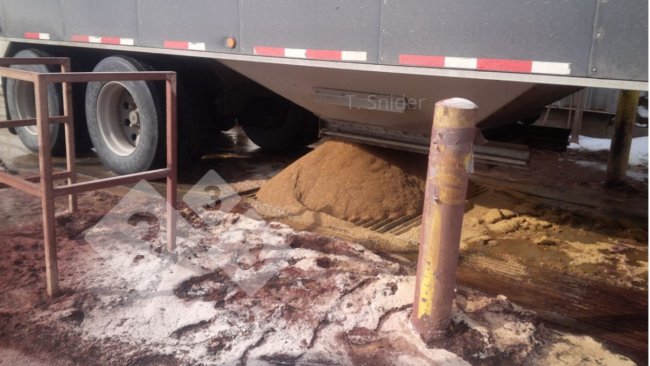
The mixing of ingredients into feed and the distribution of feed to the farm location where consumption occurs is referred to as the ‘manufacturing and post-manufacturing stage’ of the feed supply chain. This article outlines how biosecurity concepts can be applied to the manufacturing and distribution of pig feed to ensure a pathogen free product is consumed.

This article considers the component parts of disease transmission, how it applies to the pig feed ingredient supply chain, and how manufacturers of final feed can mitigate the risk of disease transmission through contaminated ingredients.

In this series of articles, we will review some important disease transmission events that occurred through the feed supply chain and we will outline the characteristics of a comprehensive feed biosecurity program that considers the biosecurity of feed ingredients and also the milling and delivery processes.

An easily performed vehicle traffic analysis can dramatically minimize the risk of cross contamination into your swine facility decreasing potential disease challenges.
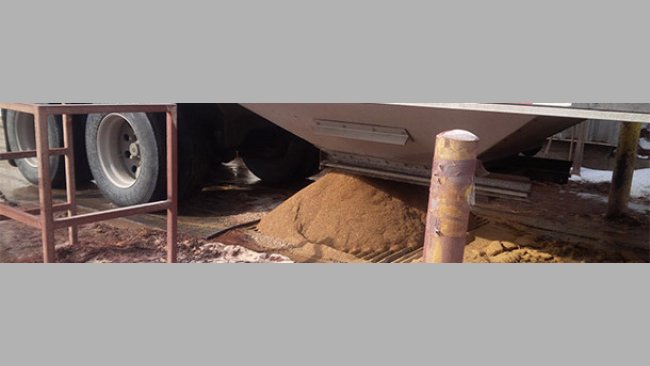
The transmission of PEDV through the feed supply chain is an example of a complex disease transmission pathway that triggered swine feed industry stakeholders to collaborate in understanding and addressing the risk factors.
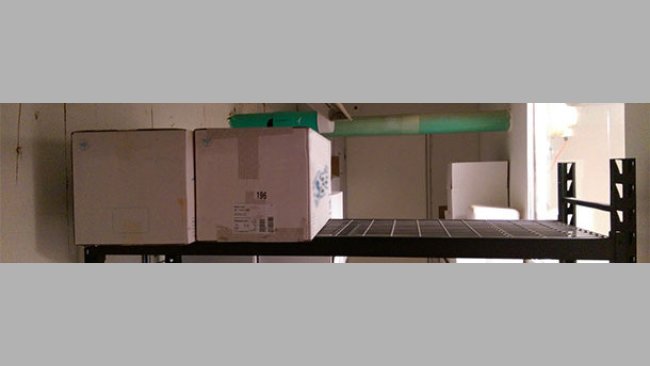
Many swine production units in North America have incorporated fumigation rooms into their barn design.
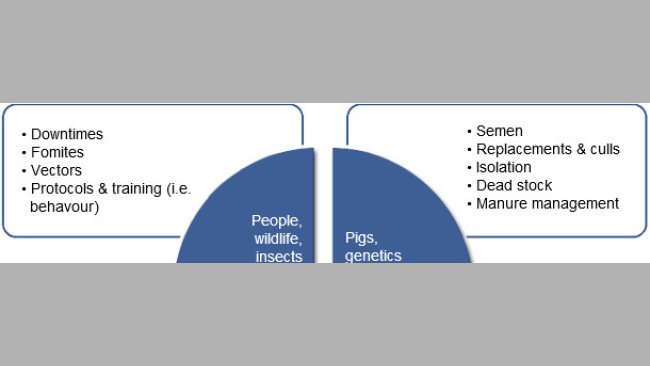
Studying the pattern of traffic flows for your production site is important when designing your “bioexclusion” game plan.

Many of these tools are difficult to clean and, in many cases, they may be damaged by water, soap, and disinfectants.

The farm, with an elevated number of animals, had been experiencing for several days an increased number of births in gestation on the weekend before moving the sows to the farrowing pens. Mortality in these births was 100%.
Welcome to 333
Connect, share, and interact with the largest community of professionals in the swine industry.
Celebrating 190988Users on 333!
Sign upAlready a member?





